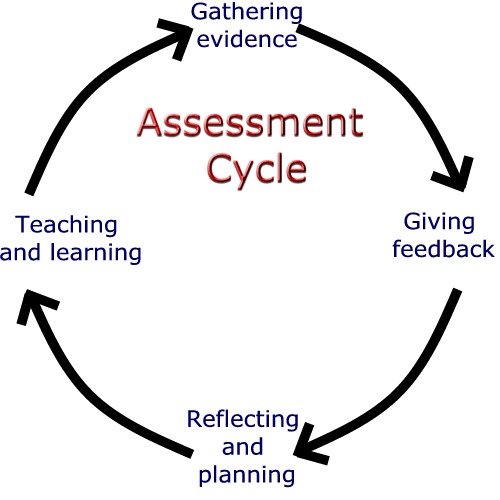|
During this activity we will focus on the
range of evidence that we can gather and people that we can
involve while assessing learning with ICT integration. Collectively
we refer to this as the assessment method - ways in which
we gather evidence that the identified assessment standards have been
achieved.

The best assessment programs are balanced
ones. They include a variety of approaches that account for
different learning styles, evaluate different types of learner
performance, and require different levels of thinking. You
have already been introduced to some ideas about different
assessment methods in earlier activities. Click
here to read about a few more ideas on gathering evidence
for assessment.
When integrating ICT with learning you are
likely to typically include a range of new classroom activities.
Maybe you will be more aware of group learning, or information
processing skills. Even though these are not dependent on
ICT integration, teachers quite often use the opportunity
of integrating ICT to try new approaches to learning such
as project-based learning. On the other hand outcomes such
as the appropriate use of technology (e.g. selection of text
and images in a PowerPoint presentation) are ICT specific.
Remember that it is preferable to primarily assess learning
outcomes when learners use ICT. For example, do not let the
flashy animation and sound in a PowerPoint presentation, or
the graphics and colours of a website influence you when
you are really seeking evidence of the learners' understanding
in these presentations. It is not beneficial to assess specific
ICT skills (e.g. ability to place a table in a document).
It would be more beneficial to assess general ICT competence
and the ability to learn independently with ICT.
How we gather evidence - who gathers
the evidence
The assessment cycle depicted in the image
above shows that assessment is valuable for both teachers
and learners. Moving away from a reliance on purely teacher-centred
assessment practices is essential if one wants to extract
all the possible benefit from assessment activities. Involving
learners in assessing themselves and each other has become
a widely used practice. Ulitmately the teacher is still reponsible
for assessment that leads to summative judgement of whether
outcomes have been achieved. Peer and self-assessment does
not replace teacher assessment, but does provide a diversity
of benefits in assessment practice.
Remind yourself of the basic elements and
issues of self- and peer-assessment by re-reading these short
notes. As you do so, familiarise yourself with the major issues
of each assessment method and try to relate these to activities
of ICT integration in your classes.
Click
here to read about Self assessment.
Click
here to read about Peer assessment.
Peer assessment can take place on an individual
basis but is also useful for group dynamics. Click
here to read the Griffith University guidelines on group,
peer and self-assessment.
In preparation for Activity 4B, in which
you will develop some assessment guidelines for your ICT integration
lessons, you should read the findings of research at two UK
universities in which peer, self and group-assessment was
implemented in various ways. Note the findings that are likely
to most influence your classroom practice and try to incorporate
these in your guidelines. In both of these two Powerpoint
presentations we have removed graphics themes and some slides
in order to restrict your reading to the essential background
and findings.
Click
here to read Assessment of Group Work, University of Warwick.
(PowerPoint file) Click
here to read The role of peer and self assessment in the
assessment of groupwork, University of Sunderland.
(PowerPoint file)
|
